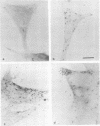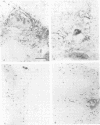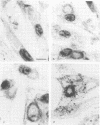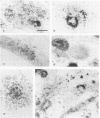Abstract
The infection cycle of Rickettsia rickettsii, studied in slide chamber cultures of chicken embryo and L-929 cells, was found to be complex and did not conform to a one-step growth cycle. Initial uptake kinetics resembled those established for Rickettsia prowazekii, but subsequent events showed very marked differences. Intracytoplasmic growth commenced exponentially without measurable lag. However, very soon after infection, intracytoplasmic rickettsiae began to escape from the host cell into the medium in large numbers, resulting in (i) failure of large numbers of rickettsiae to accumulate in the cytoplasm, (ii) sustained rapid division of the organisms in the cytoplasm, (iii) substantial accumulation of extracellular rickettsiae, and (iv) rapidly spreading infection in the culture, with most cells infected in 48 to 72 h. In the occasional cell, rickettsiae were found in the nucleus, where they multiplied to form compact masses. Thus, analysis of the growth characteristics of R. rickettsii must consider the entire culture as a unit in which the rickettsiae are distributed among three compartments in which they behave in different ways: (i) intranuclear, (ii) intracytoplasmic, and (iii) extracellular. The rickettsial traffic is bidirectional across the host cell plasma membrane and dominantly monodirectional across the nuclear membranes. The implications of this behavior with respect to location and range of receptors and substrates involved in membrane penetration are discussed. In older cultures, unique intracytoplasmic ring or doughnut colonies were common, indicating a change in the intracytoplasmic environment. The possible significance of the growth characteristics in cell culture to the characteristics of infection in humans and animals is discussed.
Full text
PDF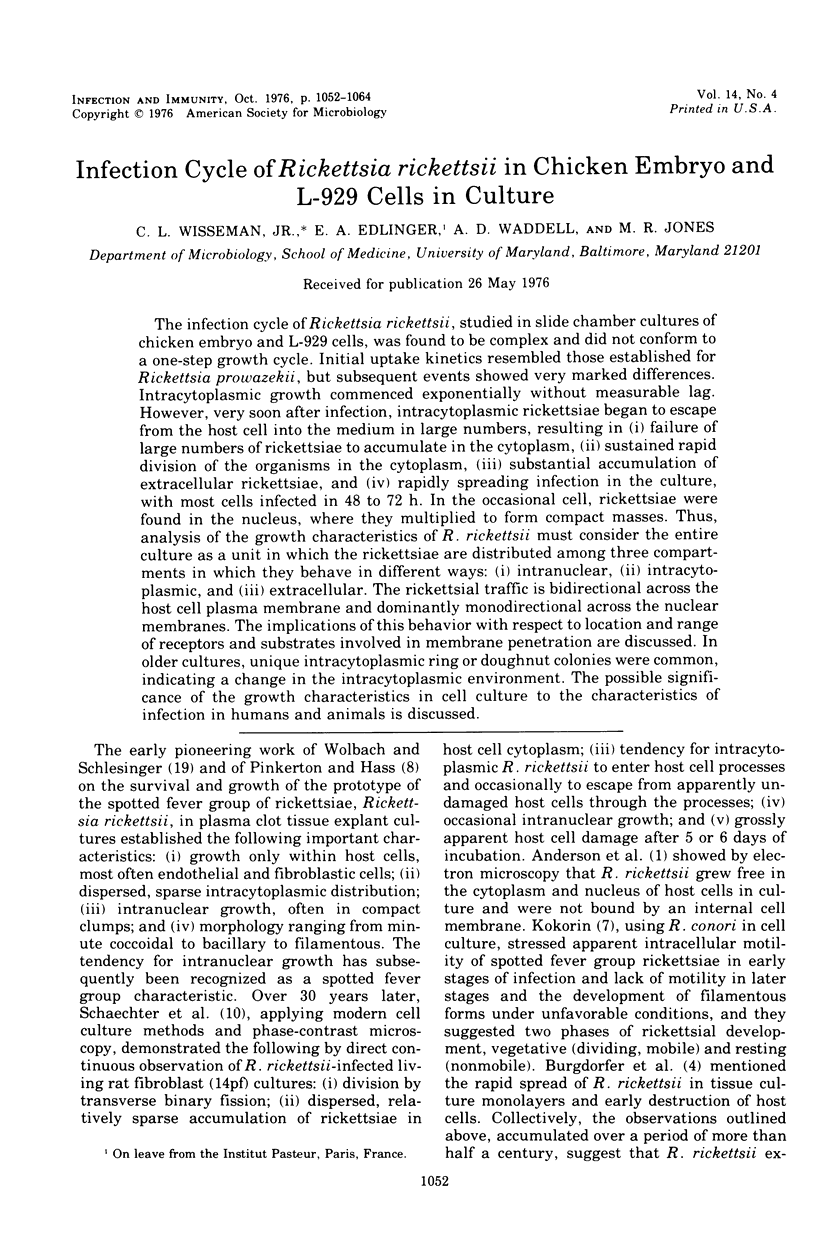
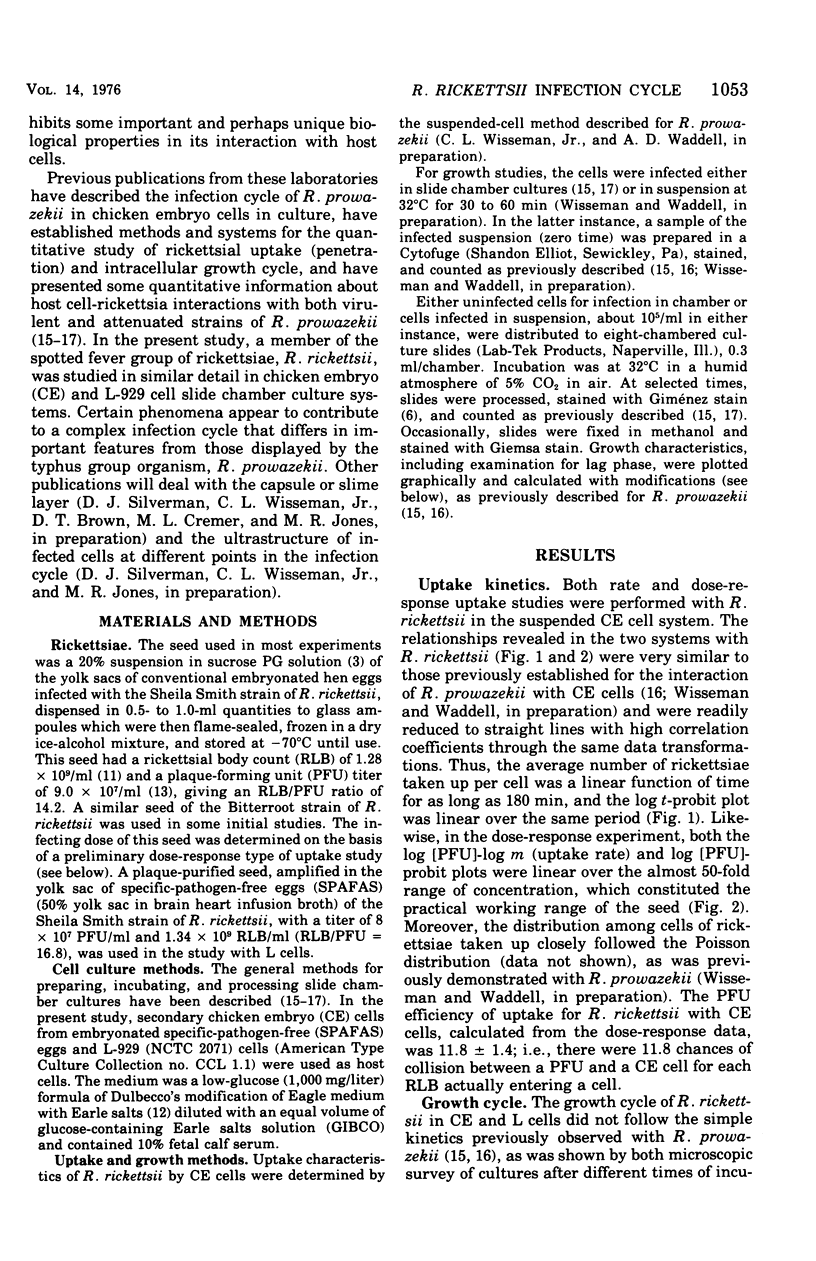
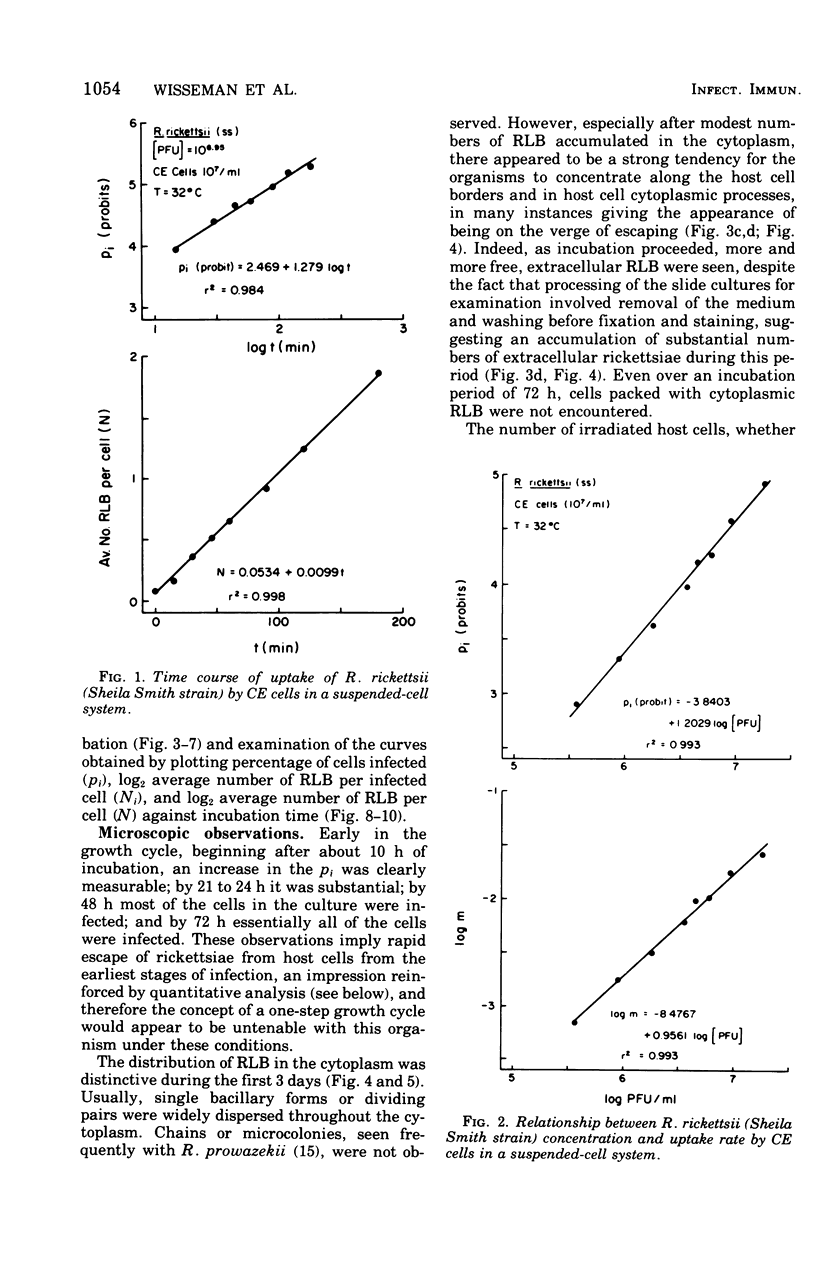
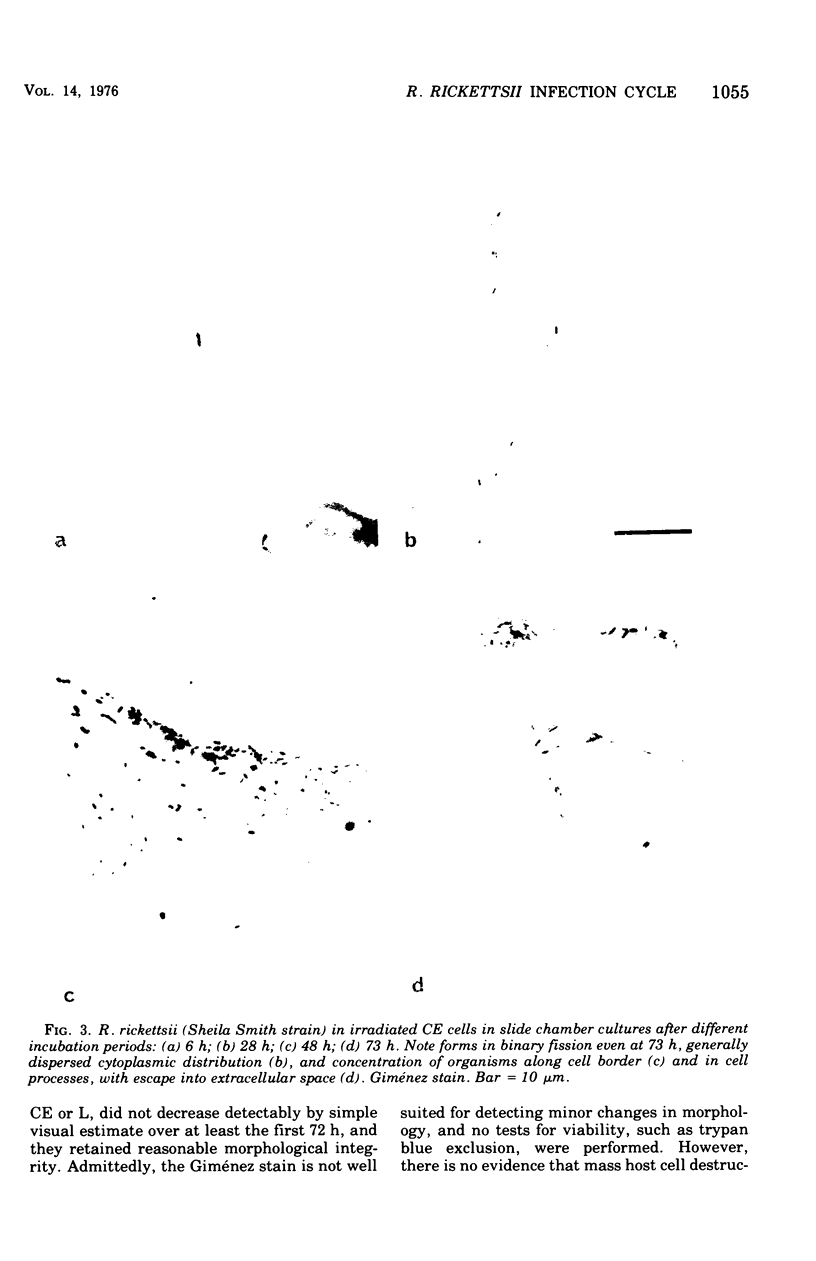
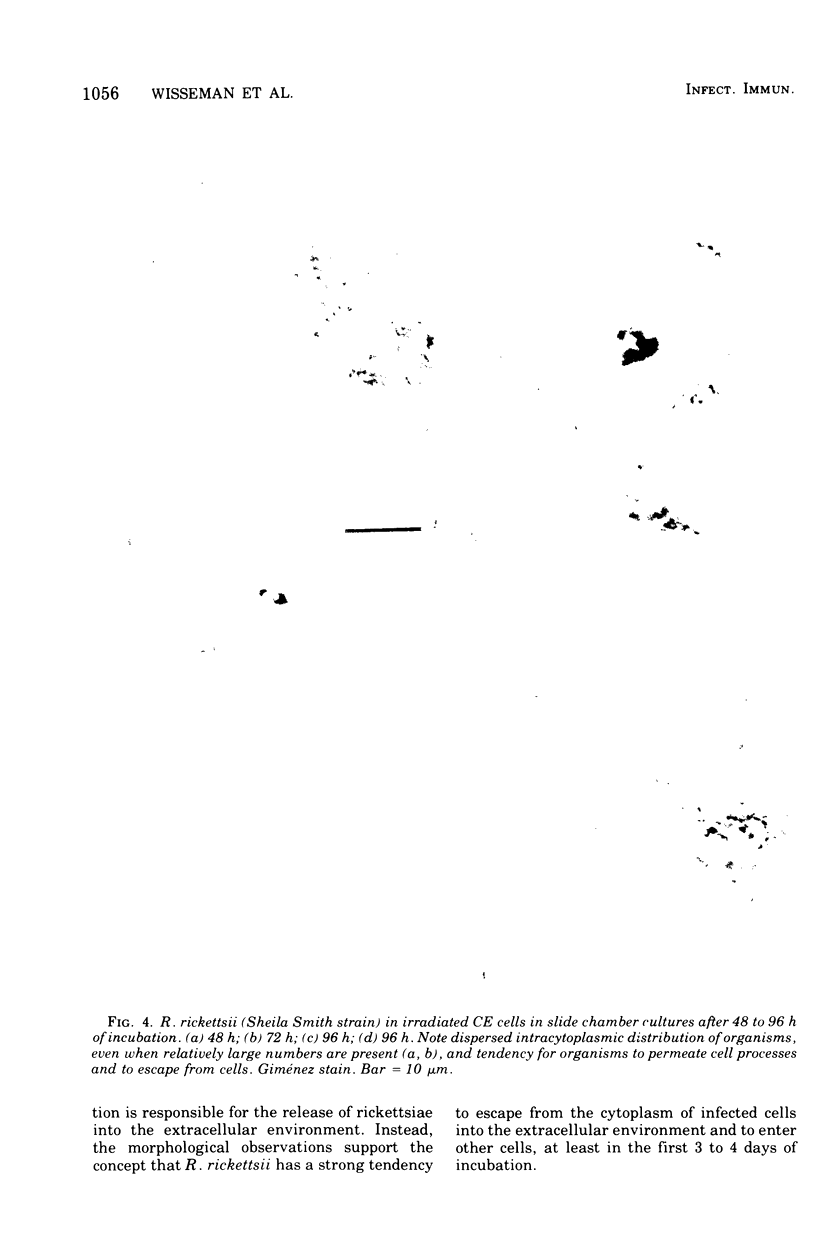
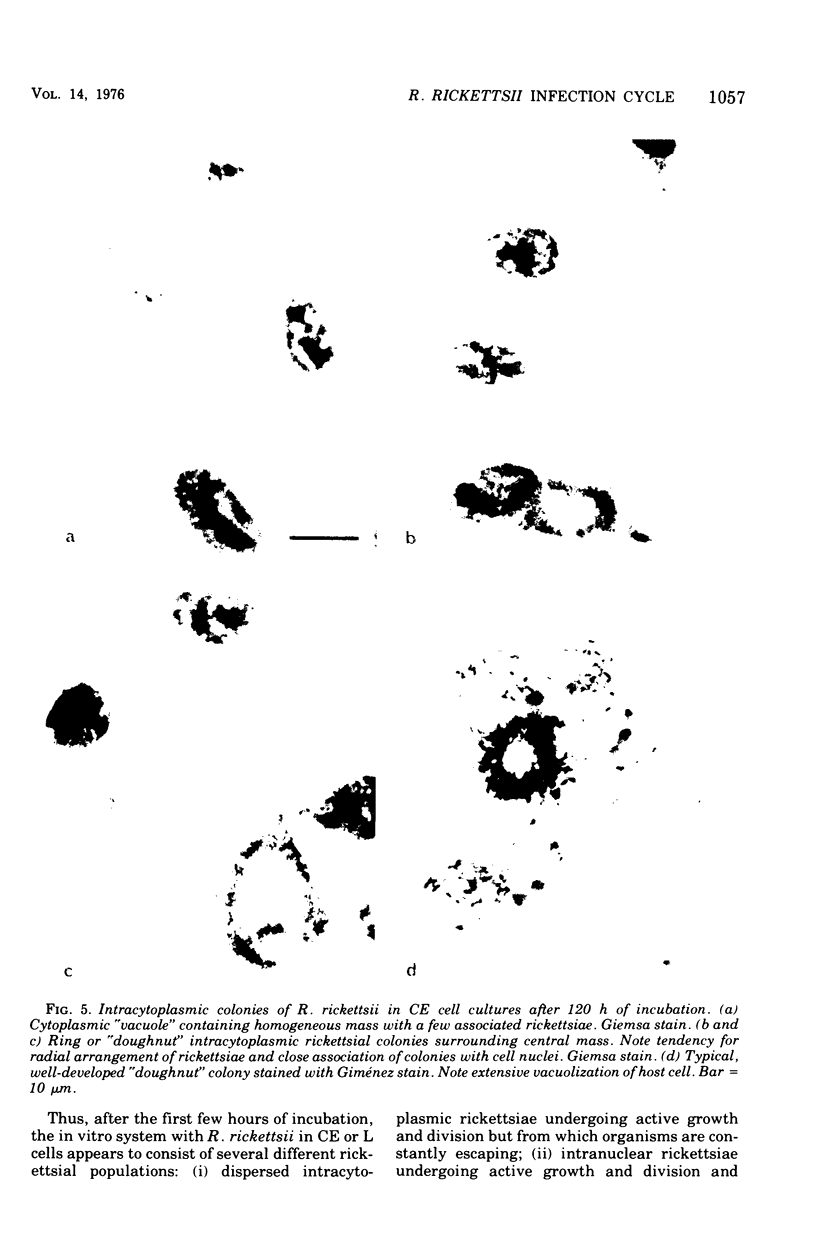
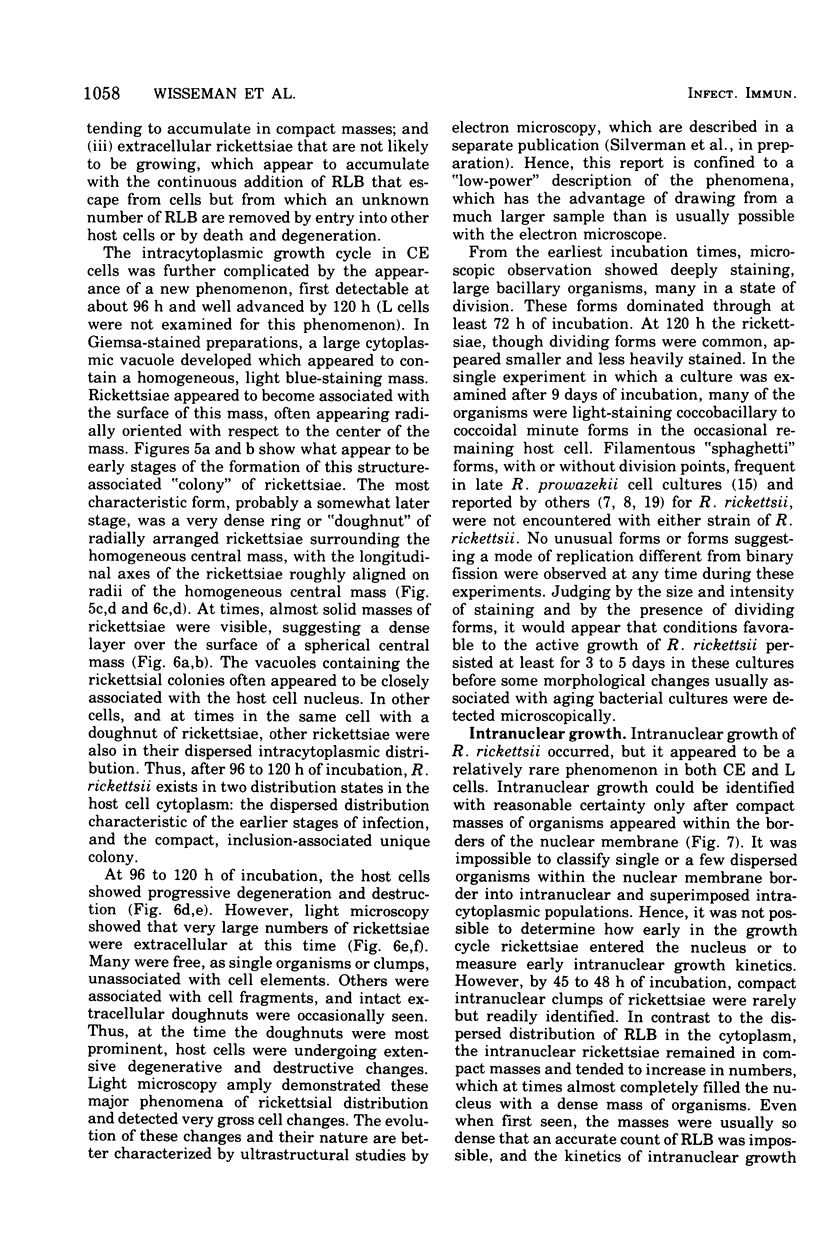
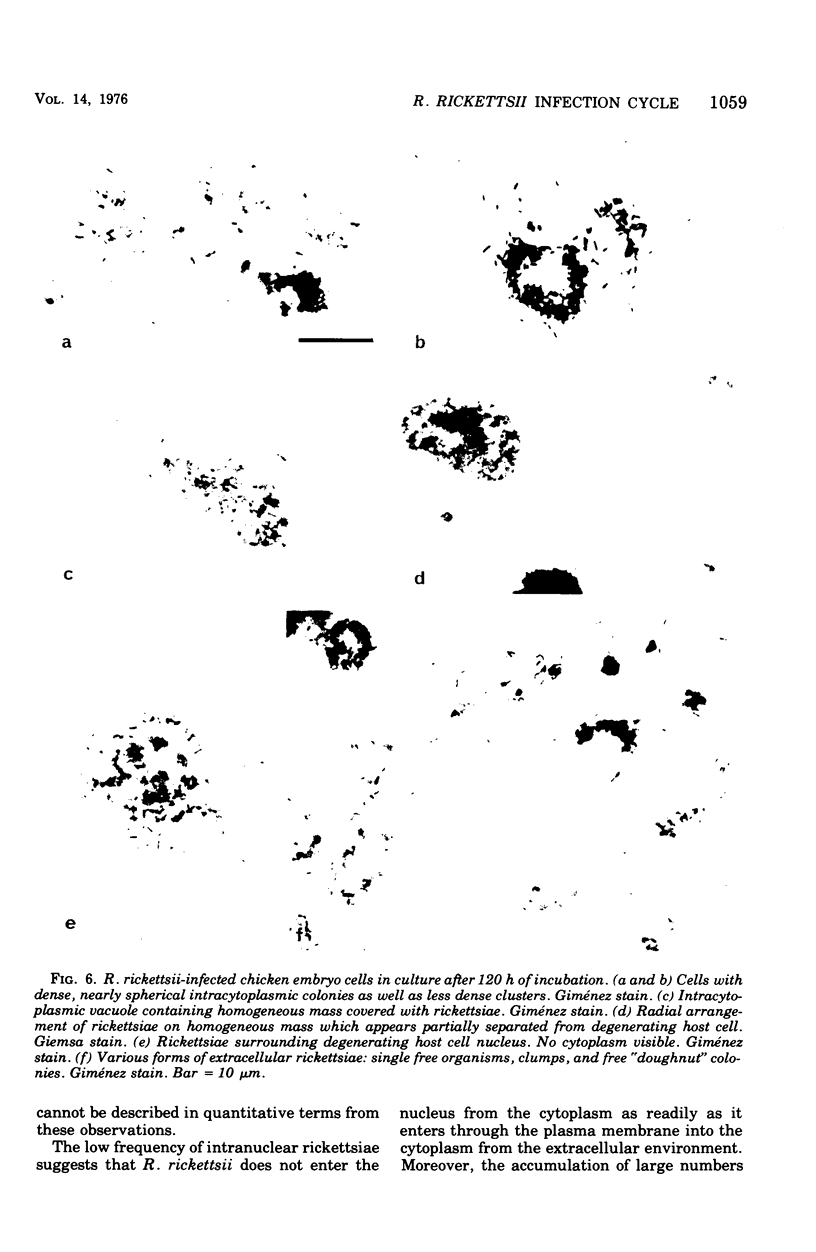
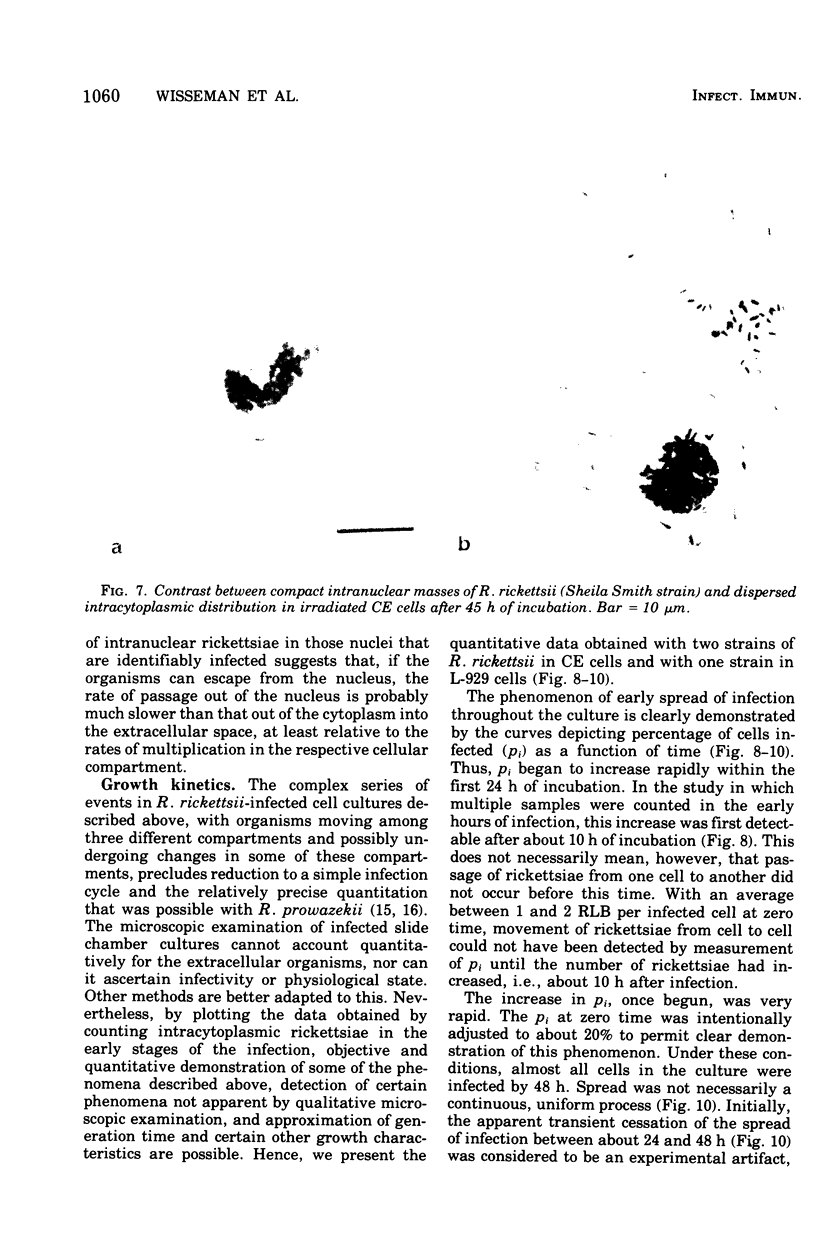
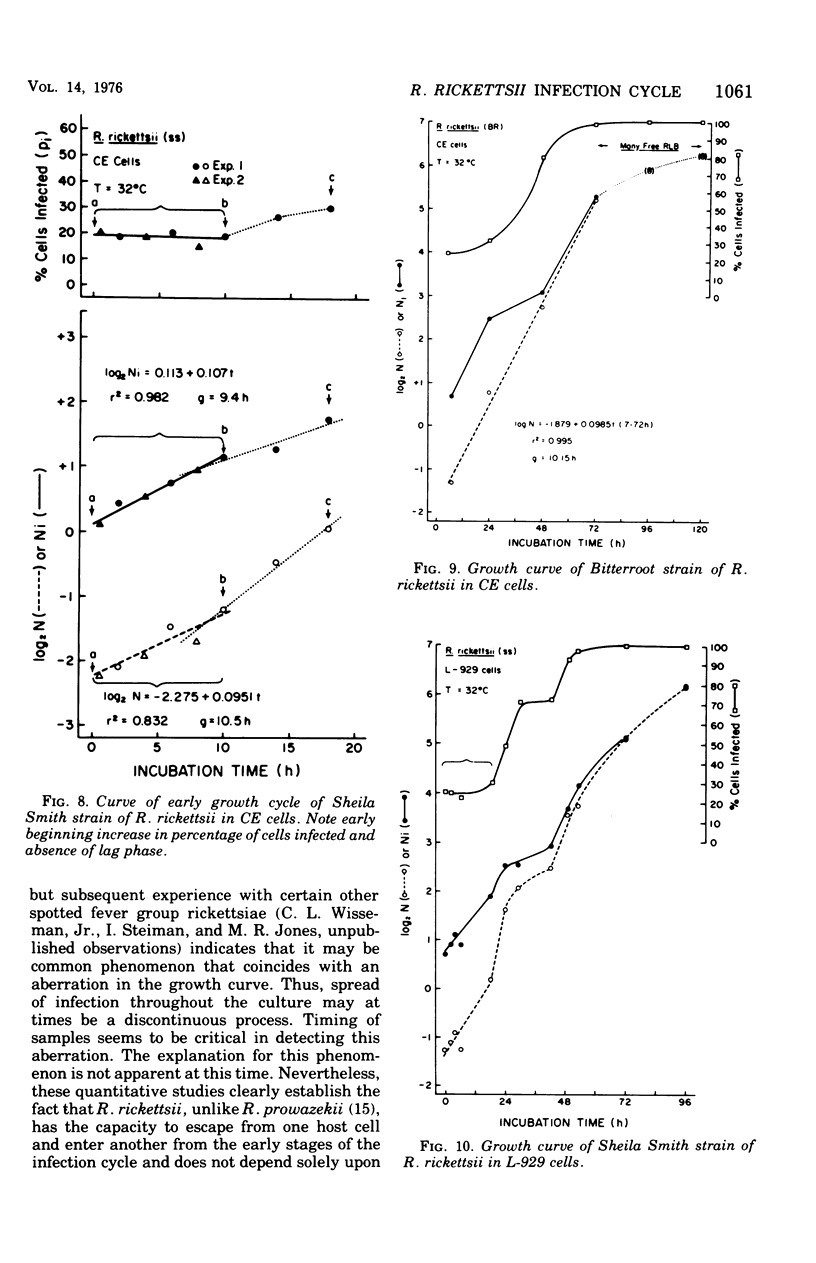
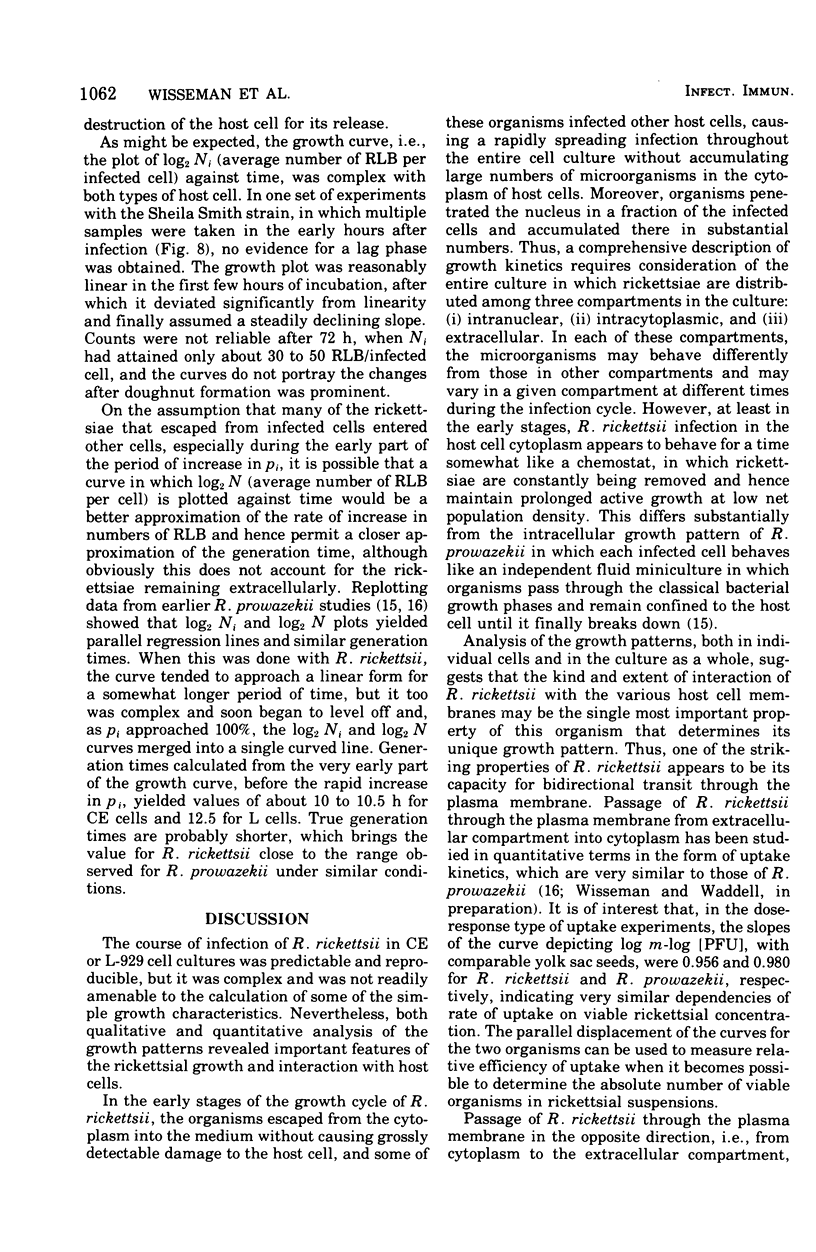
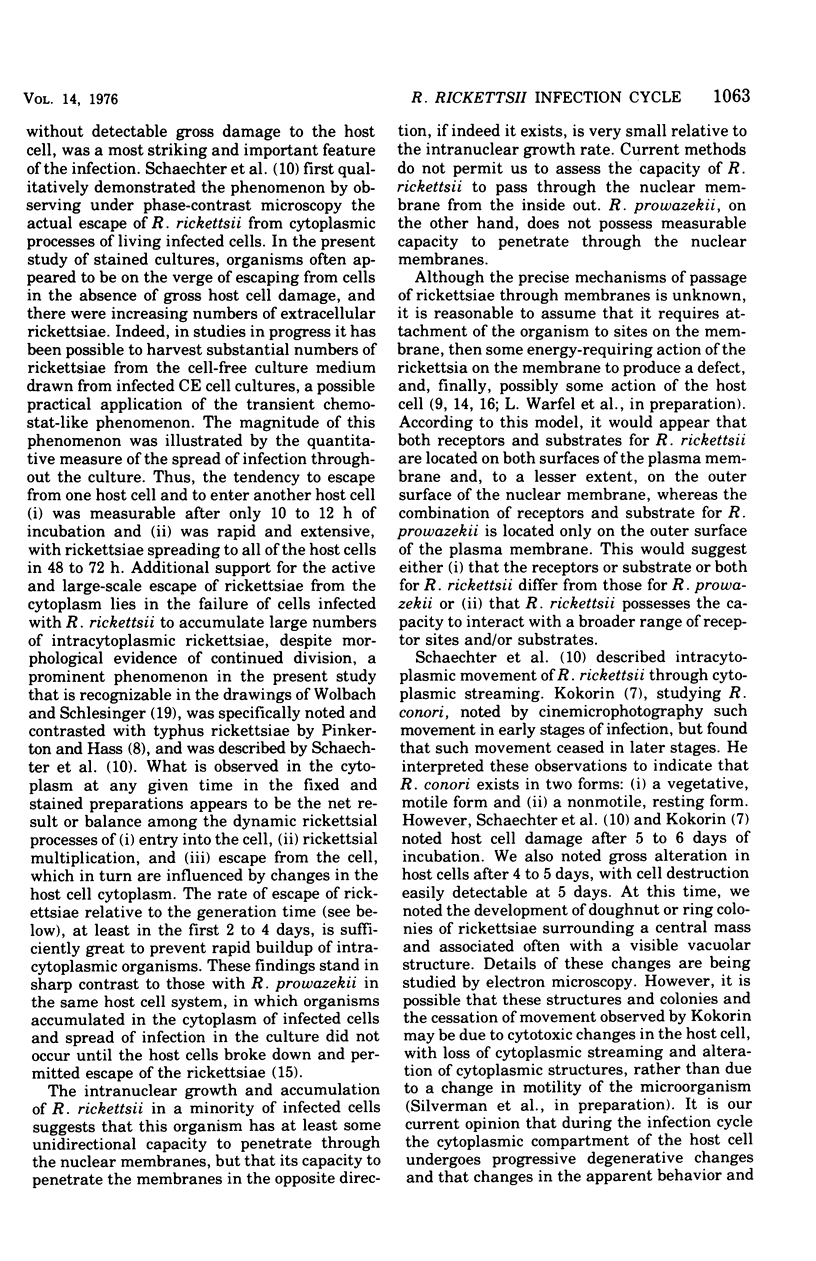

Images in this article
Selected References
These references are in PubMed. This may not be the complete list of references from this article.
- Anderson D. R., Hopps H. E., Barile M. F., Bernheim B. C. Comparison of the ultrastructure of several rickettsiae, ornithosis virus, and Mycoplasma in tissue culture. J Bacteriol. 1965 Nov;90(5):1387–1404. doi: 10.1128/jb.90.5.1387-1404.1965. [DOI] [PMC free article] [PubMed] [Google Scholar]
- BOVARNICK M. R., MILLER J. C., SNYDER J. C. The influence of certain salts, amino acids, sugars, and proteins on the stability of rickettsiae. J Bacteriol. 1950 Apr;59(4):509–522. doi: 10.1128/jb.59.4.509-522.1950. [DOI] [PMC free article] [PubMed] [Google Scholar]
- Boese J. L., Wisseman C. L., Jr, Walsh W. T., Fiset P. Antibody and antibiotic action on Rickettsia prowazeki in body lice across the host-vector interface, with observations on strain virulence and retrieval mechanisms. Am J Epidemiol. 1973 Oct;98(4):262–282. doi: 10.1093/oxfordjournals.aje.a121556. [DOI] [PubMed] [Google Scholar]
- Burgdorfer W., Sexton D. J., Gerloff R. K., Anacker R. L., Philip R. N., Thomas L. A. Rhipicephalus sanguineus: vector of a new spotted fever group rickettsia in the United States. Infect Immun. 1975 Jul;12(1):205–210. doi: 10.1128/iai.12.1.205-210.1975. [DOI] [PMC free article] [PubMed] [Google Scholar]
- COHN Z. A., BOZEMAN F. M., CAMPBELL J. M., HUMPHRIES J. W., SAWYER T. K. Study on growth of Rickettsia. V. Penetration of Rickettsia tsutsugamushi into mammalian cells in vitro. J Exp Med. 1959 Mar 1;109(3):271–292. doi: 10.1084/jem.109.3.271. [DOI] [PMC free article] [PubMed] [Google Scholar]
- GIMENEZ D. F. STAINING RICKETTSIAE IN YOLK-SAC CULTURES. Stain Technol. 1964 May;39:135–140. doi: 10.3109/10520296409061219. [DOI] [PubMed] [Google Scholar]
- Kokorin I. N. Biological peculiarities of the development of rickettsiae. Acta Virol. 1968 Jan;12(1):31–35. [PubMed] [Google Scholar]
- Ramm L. E., Winkler H. H. Identification of cholesterol in the receptor site for rickettsiae on sheep erythrocyte membranes. Infect Immun. 1976 Jan;13(1):120–126. doi: 10.1128/iai.13.1.120-126.1976. [DOI] [PMC free article] [PubMed] [Google Scholar]
- SCHAECHTER M., BOZEMAN F. M., SMADEL J. E. Study on the growth of Rickettsiae. II. Morphologic observations of living Rickettsiae in tissue culture cells. Virology. 1957 Feb;3(1):160–172. doi: 10.1016/0042-6822(57)90030-2. [DOI] [PubMed] [Google Scholar]
- Silberman R., Fiset P. Method for counting Rickettsiae and Chlamydiae in purified suspensions. J Bacteriol. 1968 Jan;95(1):259–261. doi: 10.1128/jb.95.1.259-261.1968. [DOI] [PMC free article] [PubMed] [Google Scholar]
- Wike D. A., Tallent G., Peacock M. G., Ormsbee R. A. Studies of the rickettsial plaque assay technique. Infect Immun. 1972 May;5(5):715–722. doi: 10.1128/iai.5.5.715-722.1972. [DOI] [PMC free article] [PubMed] [Google Scholar]
- Winkler H. H., Ramm L. E. Adsorption of typhus rickettsiae to ghosts of sheep erythrocytes. Infect Immun. 1975 Jun;11(6):1244–1251. doi: 10.1128/iai.11.6.1244-1251.1975. [DOI] [PMC free article] [PubMed] [Google Scholar]
- Wisseman C. L., Jr, Waddell A. D. In vitro studies on rickettsia-host cell interactions: intracellular growth cycle of virulent and attenuated Rickettsia prowazeki in chicken embryo cells in slide chamber cultures. Infect Immun. 1975 Jun;11(6):1391–1404. doi: 10.1128/iai.11.6.1391-1401.1975. [DOI] [PMC free article] [PubMed] [Google Scholar]
- Wisseman C. L., Jr, Waddell A. D., Silverman D. J. In vitro studies on Rickettsia-host cell interactions: lag phase in intracellular growth cycle as a function of stage of growth of infecting Rickettsia prowazeki, with preliminary observations on inhibition of rickettsial uptake by host cell fragments. Infect Immun. 1976 Jun;13(6):1749–1760. doi: 10.1128/iai.13.6.1749-1760.1976. [DOI] [PMC free article] [PubMed] [Google Scholar]
- Wisseman C. L., Jr, Waddell A. D., Walsh W. T. In vitro studies of the action of antibiotics on Rickettsia prowazeki by two basic methods of cell culture. J Infect Dis. 1974 Dec;130(6):564–574. doi: 10.1093/infdis/130.6.564. [DOI] [PubMed] [Google Scholar]



